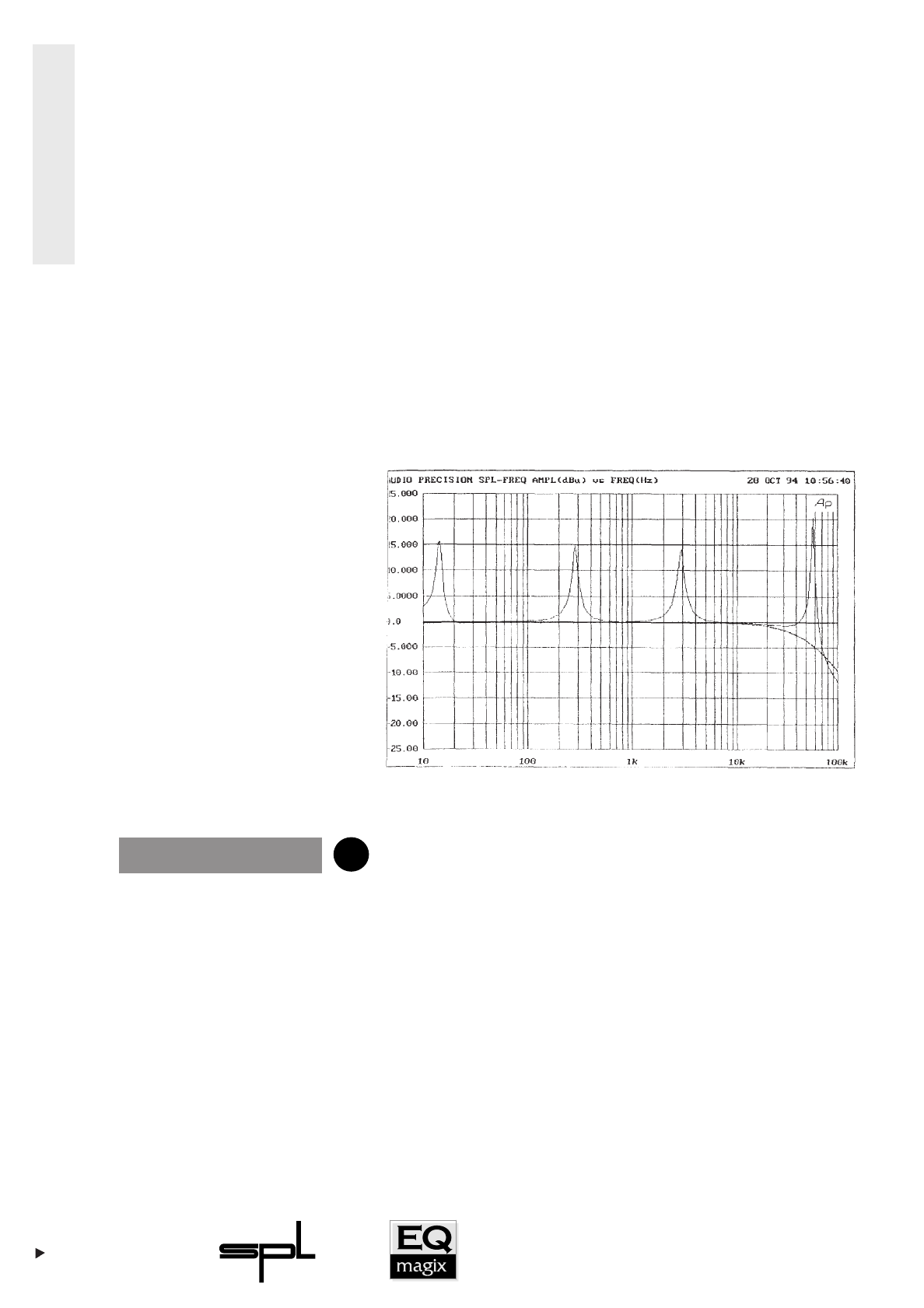
Practical applications bring accurate processing of subwoofer tracks to
mind, along with a problem which modern recording procedures (PCM,
hard disk, samplers etc.) frequently involve; here, the frequencies recorded
are often in the infra-sonic frequency range (digital coding). When they are
reproduced (which involves D/A conversion), low-frequency signal portions
can cause phase distortions in the audible range, creating secondary effects
which cannot be corrected subsequently. The EQ MAGIX can filter these
interferences out.
On the other hand, modern sound reproduction technology is extending
the range of frequencies which can be used sensibly, by the addition of
lower and lower frequencies.
On the potentiometer scale, the frequency 1 kHz has been outlined for
reasons of clarity and ease of orientation.
The diagram below shows the frequency range which can be processed by
the EQ MAGIX in the P
ARAMETRIC stage: 14 HZ to 58 kHZ:
The B
OOST/CUT control determines amplification and attenuation of the
selected frequency range. Increases and decreases of +15 dB and -15dB
are possible.
Apart from determining boost and cut, the B
OOST/CUT control has a
second function when the N
OTCH mode has been activated:
Once the N
OTCH filter has been activated, the BOOST/CUT control changes
to the R
OLL-OFF function, thus becoming the control for basic sound charac-
teristics (also see point 12, N
OTCH/ROLL-OFF). In the -15dB setting (extreme
left) the slope of the Notch (R
OLL-OFF) corresponds to a flat rise or fall. This
position is known as G
ENTLE. In the +15 dB setting, (extreme right), the
R
OLL-OFF corresponds to a steep rise or fall. This position is known as STEEP.
The EQ MAGIX is designed to be able to process individual signals and
therefore supports the constant-Q principle so as to allow quick and accu-
rate work, which also permits influencing the sound quite drastically.
In the constant-Q principle, the amplitude of any frequency selected
remains constant if the bandwidth (Q) is increased or decreased.
16
Parametric
9
Boost/Cut
Fig. 2:
The processable frequencies of the
EQ MAGIX´s P
ARAMETRIC
stage
ranges from 14 Hz to 58 kHz.
As an example the frequencies 14
Hz, 280 Hz, 2 kHz and 58 kHz are
boosted by +15dB.


















